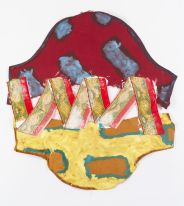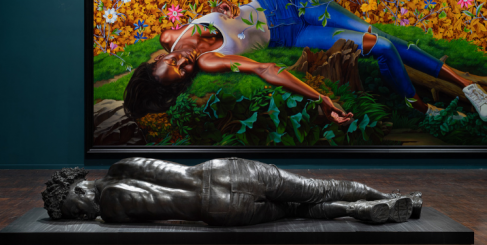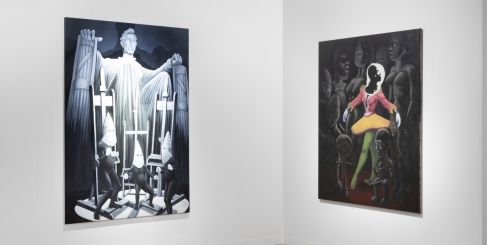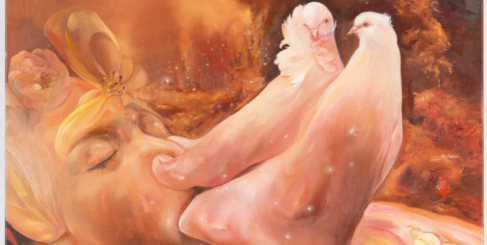News
Galerie Templon to exhibit new works by founding-member of the avant-garde Supports/Surfaces movement Claude Viallat 30 JAN. TO 20 MAR.
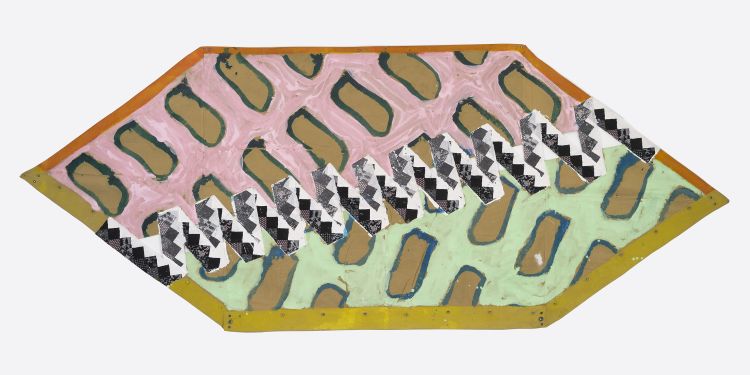
CONTACTS
& DOCUMENTATION
Lindsey Williams
lwilliams@communicart.fr
+ 33 (0)7 69 98 73 96
Represented for twenty years by Galerie Templon, Claude Viallat, an iconic figure of French contemporary art, is taking over the vast space on Rue du Grenier-Saint-Lazare for the first time with a radical exhibition that defies the codes of painting, volume and space.
A member and founding-member of the avant-garde Supports/Surfaces movement in the 1970s, Claude Viallat has established himself as a leading figure in French painting.
For nearly half a century, he has spurned stretchers and canvases, instead painting on unstructured or juxtaposed textiles, endlessly repeating the same motif in a palette of shimmering colours.
“Sutures and Varia” offers a selection of works painted in the last two years. The new “sutures” series, elaborated during the recent lockdowns, is anchored for the first time in a reflection on the notion of junction.
Fabrics with unusual contours and textures are assembled, as if “sutured” by strips of fabric with floral patterns. These sutures, simultaneously friezes and bandages, are laid loose or carefully folded with glue by the artist. The wall can be seen through their gaps, thus revealing the artifice of the combinations.
In Viallat's work, intuition creates the canvas. The artist explains his approach: “I can never predict how the work will turn out, and even after several decades of artistic practice, I'm still surprised by the result. Yet I always accept it as it is. It is almost a human-to-human relationship I have with the work. I do what I can with it until it no longer wants me...”
The bold, intuitive, spontaneous dialogue between industrial canvases and household linens, suddenly metamorphosed by their verticality and the painter's intervention, marks a further step in the artist's reflection on the status of the artwork. Is it possible to move away from the conventional framework of a picture while creating a work of art that is, resolutely, a “painting”? How to bring out the expressive power from such heterogeneous, worn-out materials, already replete with motifs and patterns?
Fresher and more creative than ever, these new works bear witness to the complex explorations of an artist who, at nearly 85 years of age, has never ceased to question the physical experience of art, its relationship to space and the formal limits of the “picture”.

